Pakui Hardware is the name for the collaborative artist duo Neringa Cerniauskaite and Ugnius Gelguda, which began in 2014, even though they were already collaborating before. The year 2014 was also when I first saw their work in real life at their solo exhibition ‘The Metaphysics of Runner’ at the CAC in Vilnius. It was made up of details from advertisements and other elements, such as sports clothing and stylised fitness gadgets, all belonging to the cult of the healthy body. Since then, the sleek aesthetics of the commercial world have been replaced in their work by much more abstract shapes and unexpected combinations of materials. The main interest in the body has stayed, but is much expanded. As they describe their practice themselves, ‘The work revolves around the relationship between materiality, technology and the economy, exploring how technology is shaping today’s economy, and the physical reality itself, including the human body.’
Their most recent solo exhibitions include ‘Avoider of Disorder’ at the Future Gallery in Mexico City, ‘Extrakorporal’ at Bielefelder Kunstverein in Germany (2018), and ‘The Return of Sweetness’, at the Tenderpixel Gallery in London (2018). They have taken part in numerous group shows at venues such as Kunsthalle Basel, Kunstverein Brauschweig and Kunstverein Freiburg, and the Musée d’Orsay. The project they are currently working on includes a solo exhibition at the Museum der bildenden Künste, Leipzig (MdbK).
I started my email exchange with Pakui Hardware in the middle of January, when the days were still unbearably short in Riga, wrapping it up with spring in the air, as well as in the body.
Inga Lāce: How did the New Year in 2019 start for you? Snow and fireworks, New Year’s resolutions, or new exhibitions?
Pakui Hardware: The last few years were incredibly intense for us: we basically lived in airports, on our smartphone screens, and in our studio and exhibition spaces. This is old news and a familiar routine to a number of people who work in the field of art, and other fields in general. In these dynamic and rhizomatic times, nothing else is expected of you. Therefore, we promised ourselves that this year we would push (at least as much as we can) against the exhausting hard-core pace imposed by the neo-liberal regime, which is accelerated by modern technologies, allowing and demanding that one be reachable and responsive 24/7. We are striving towards a mode, where ‘ASAP’ becomes ‘ahorita’, meaning soon-ish, where time is not so compressed by deadlines, but runs according to your body. However, like most resolutions, this one too might remain just a beautiful vision, without ever materialising. Let’s see: 2019 is just beginning!
Your bio says that ‘Pakui Hardware is the name coined by the curator Alex Ross (NY) for the collaborative artist duo Neringa Cerniauskaite and Ugnius Gelguda, which began in 2014. The title Pakui Hardware refers to Pakui, the special attendant of a Hawaiian goddess, who could circle the island of Oahu six times a day. Thus, Pakui Hardware is high-speed and brand politics as a mythical semio-commodity, as well as a desire to transcend material limitations. Semio-Capital meets materiality. Before Pakui Hardware, Neringa, you were a curator and writer, and Ugnius, you were an artist. I am curious to know what made you turn to a collaborative art practice as the best way of materialising thoughts and ideas, and what makes you continue?
There was never really an articulated decisive moment, saying ‘This is it, from now on we’re officially an artistic collaboration.’ It all evolved so organically, so imperceptibly, that it is difficult now to trace and actually explain to others how this close collaboration developed. We were like an open Google doc, with blinking writing and overwriting each other’s ideas, sharing links and references, serious and not so, until it became impossible to distinguish whose idea or link it was. It just merged into an anonymous flow of things. Of course, we’ve learnt quite a bit over the years of our collaboration, both from each other and from others, but our different backgrounds filled in the gaps nicely, or opened up new ways in our work process. Over the years, studio practice became indispensable in our work, and we put our ideas forward more and more through materials and their performance rather than verbal language. However, we also enjoy developing performative lectures from time to time, as an additional mode of displaying our current field of interests, concerns and speculations.

Pakui Hardware, Extrakorporal, solo exhibition at Bielefelder Kunstverein, Germany, 2018
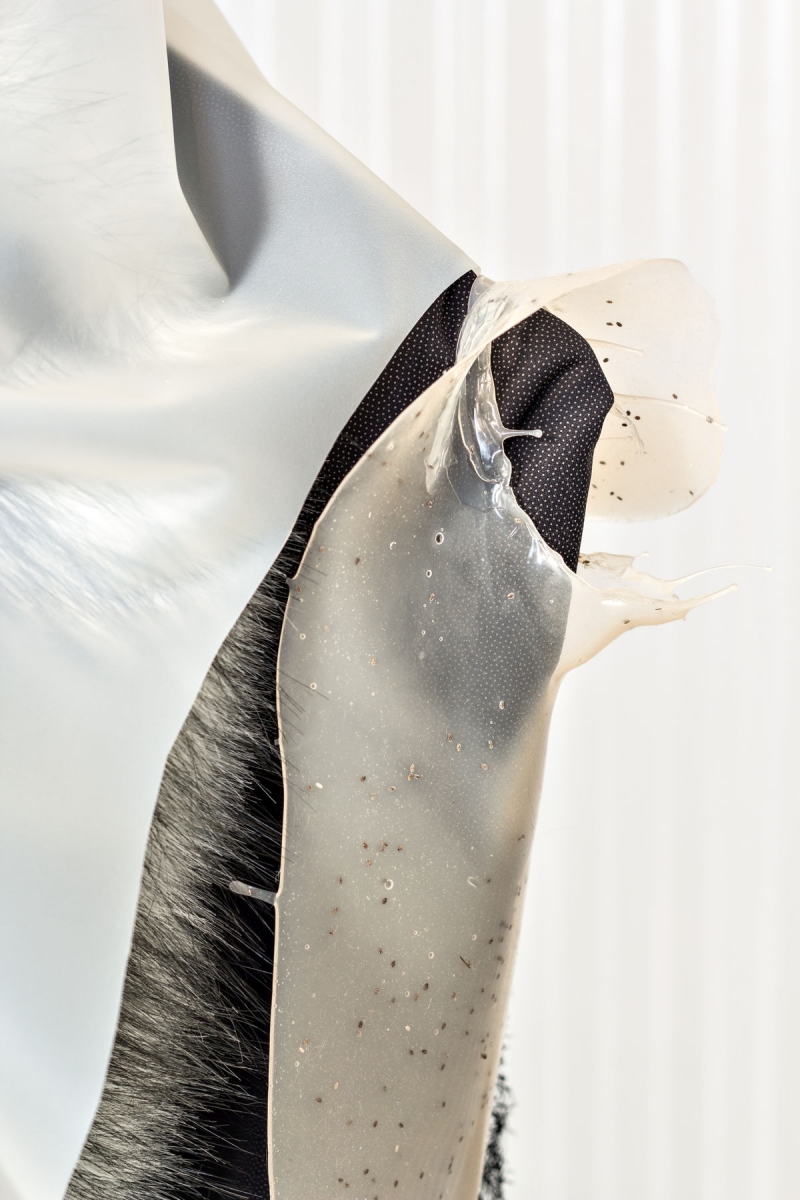
Pakui Hardware, Extrakorporal, 2018. Glass, faux-fur, latex rubber, silicone, chia seeds, various textiles, metal holders. Solo exhibition at Bielefelder Kunstverein, Germany (detail)
What are your main concerns in the world right now, and how do they materialise in your practice?
From the very beginning, our practice was concerned with bodies. And not just human bodies, but also bacterial, celestial, aquatic and artificial mechanical bodies. We’ve tried to see how these bodies are entangled, penetrated, and transformed by different assemblages of the economy, materiality, technological developments, biology, and indeterminacy. Our last couple of projects focused on modern medicine, and its invasive and monitoring relationship with organisms. In ‘The Return of Sweetness’, we turned to metabolism both as a metaphor for an economic approach to nature (thinking of the term metabolic rift, used by McKenzie Wark as a way to speak about the irreversible rift in nature driven by the Capitalocene), as well as a physical process. Since metabolism is thought of as more or less individual (each of us has a different metabolic rate), today it is another case of being monitored and controlled by large power structures. While we are encouraged to boost our metabolism, at the same time we are entangled in socio-economic structures that determine our diets and habits. Therefore, we looked into various kinds of gastric bypass surgery, and how modern medicine basically sculpts organs, like stomachs, in order to control the amount of food that enters the body. For the installation, we created a group of sort of externalised organisms, open for inspection by viewers.
In our latest project ‘Extrakorporal’, this outward mode took another step: it concentrated on biological tissues and organs grown outside the limits of bodies, and thus even more open for circulation in the so-called tissue economy. Regenerative medicine and tissue engineering are striving to rejuvenate and regenerate biological cells, and in this project they take their resources not only from technology, but also from non-human and still inexplicable rejuvenation found in some species, such as certain types of jellyfish and sea-urchin. Thus, it merges hard science, biology, the human desire for immortality, and almost esoteric, shamanic ways of extracting the secrets of eternal life from other species. The installation we presented at Bielefelder Kunstverein displays weird-looking creatures, neither human nor purely animal, neither technological nor organic, levitating in space, that also recall the agar jelly used in a Petri-dish: the space is filled with transparent and floating architecture, which softly wraps these objects and viewers alike in its ‘pockets’.
Does this mean that you immerse yourself in the latest scientific papers for your research?
We couldn’t understand properly purely scientific papers even if we tried really hard: they’re written for the scientific community, and are loaded with terms and references that we wouldn’t grasp. However, we read quite a few science magazines, which ‘translate’ and summarise these scientific papers for a more general, yet curious, audience. Besides the latest updates from ‘hard-science’, we also like to immerse ourselves in political and social theory, anthropology and philosophy, but also in poetry and literature. And also in monographs by some artists!
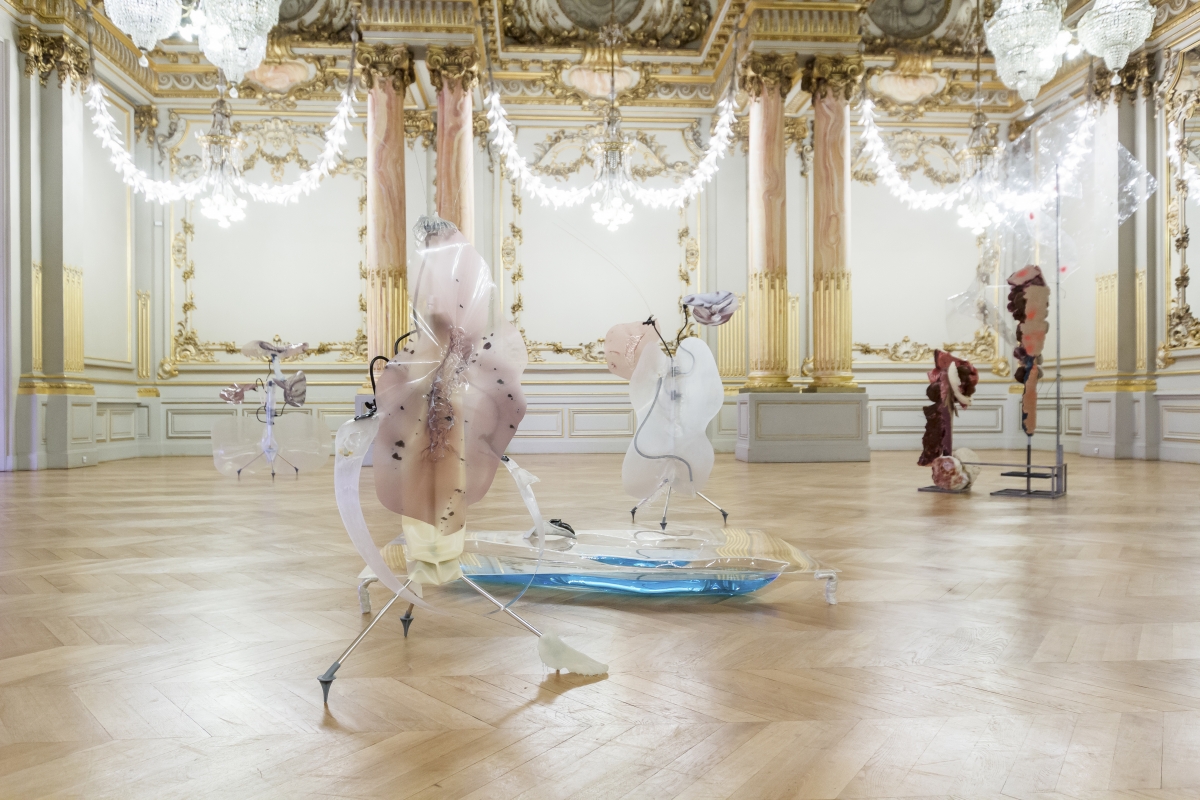
Pakui Hardware, On Demand, group show Solar Bodies at Musée d’Orsay, Paris, 2018
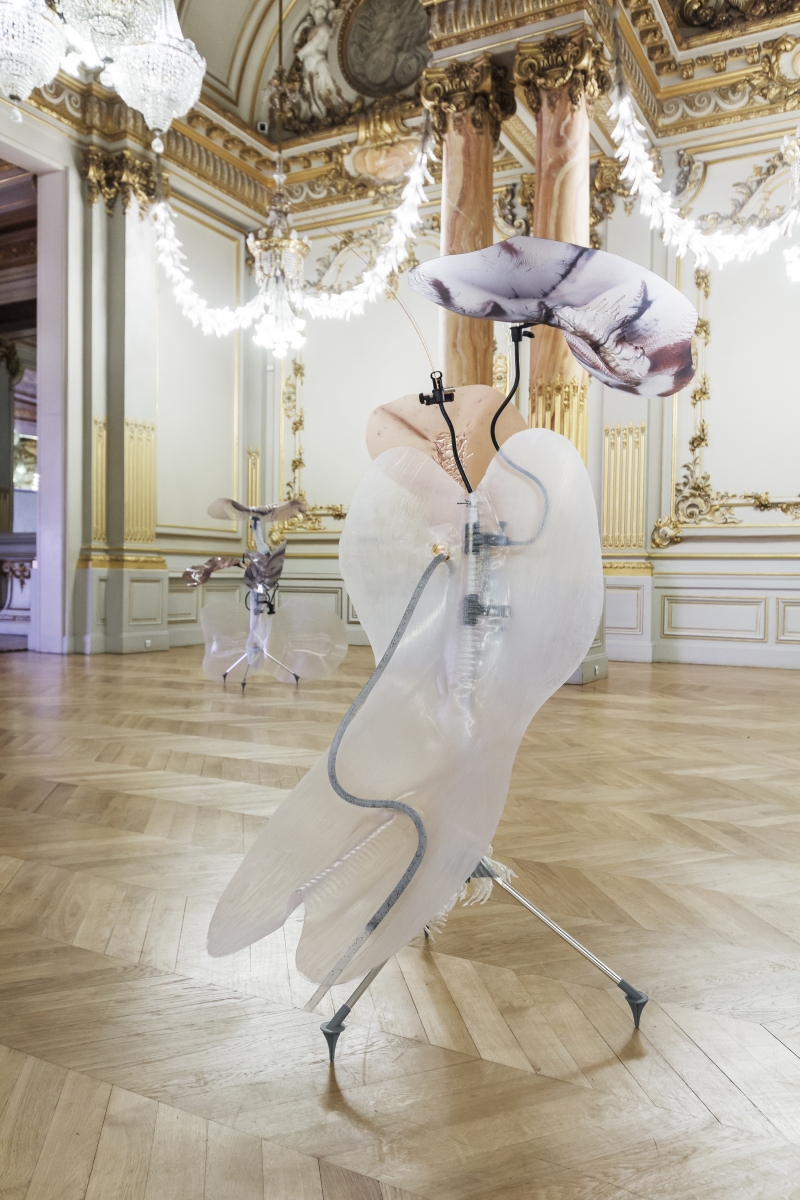
Pakui Hardware, On Demand, group show Solar Bodies at Musée d’Orsay, Paris, 2018
There is an increasing interest in science-fiction scenarios in moments of rapid technological development, coupled with political turmoil, which also characterise this moment in time. Could you tell us a bit more about your relationship with science-fiction? Are there particular inspirations, ideas, books or films?
It’s hard for us to find a sci-fi film that we haven’t yet seen, from the very early ones to the later indie or blockbuster movies. We also read all the sci-fi classics, of course (like Phillip K. Dick and Ursula K. Le Guin), but we cannot really claim that science-fiction has a strong influence on our practice. In a funny way, psychedelic depictions of deadly sins and hell by 15th-century Flemish painters evoke crazier visions and scenarios of a hybrid future than a film saturated with special effects. Works by older artists, such as Alina Szapocznikow, Eva Hesse, Anu Põder, Joachim Bandau and Lynda Benglis, have more impact on us than contemporary sci-fi. Perhaps a more interesting aspect of it comes from African Futurism and feminist sci-fi writings.
You mentioned mostly female artists who experimented with new materials and new formats in their time. How do you relate to that feminist legacy? And what about the newness of materials, how does that work out in your practice today?
Perhaps it’s not so apparent at first glance, but our work is very much informed by the feminist legacy, mainly in its focus on the body, embodiments, hybridity, inter-species and critique of capitalism. Like certain feminist thinkers, we also celebrate and do not mourn cyborgian and post-human transformations.
As for the newness of materials, all the examples of artists we mentioned above worked with new materials for their time, and the health of many of these artists also deteriorated because of it. Today, these materials are considered an already-established way of making art; however, we try to include contemporary materials and ready-mades that speak particularly of today, which will serve as witnesses of today. They include everything, from chia seeds to an industrial robotic hand.
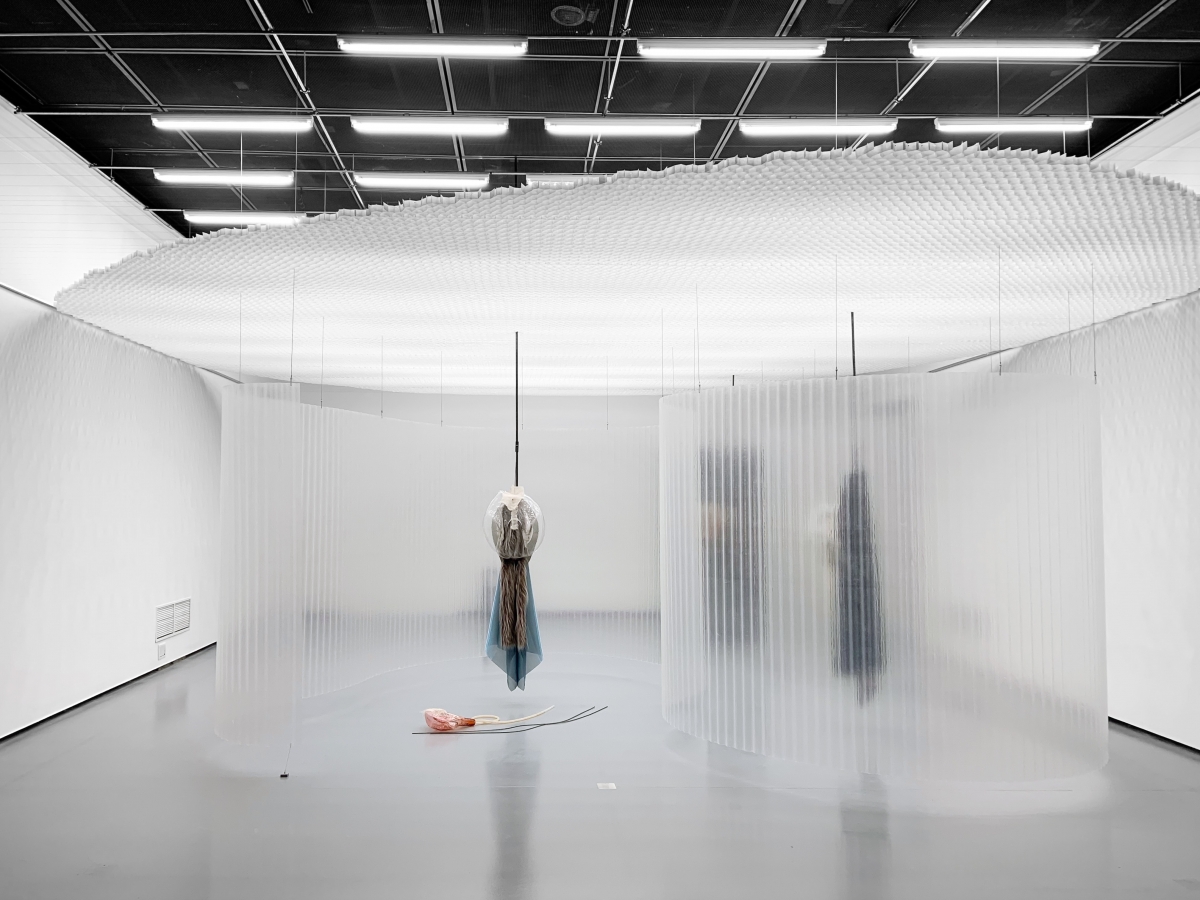
Pakui Hardware, Extrakorporal, group exhibition Human-free Earth at Ujazdowski Castle Center for Contemporary Art, 2019
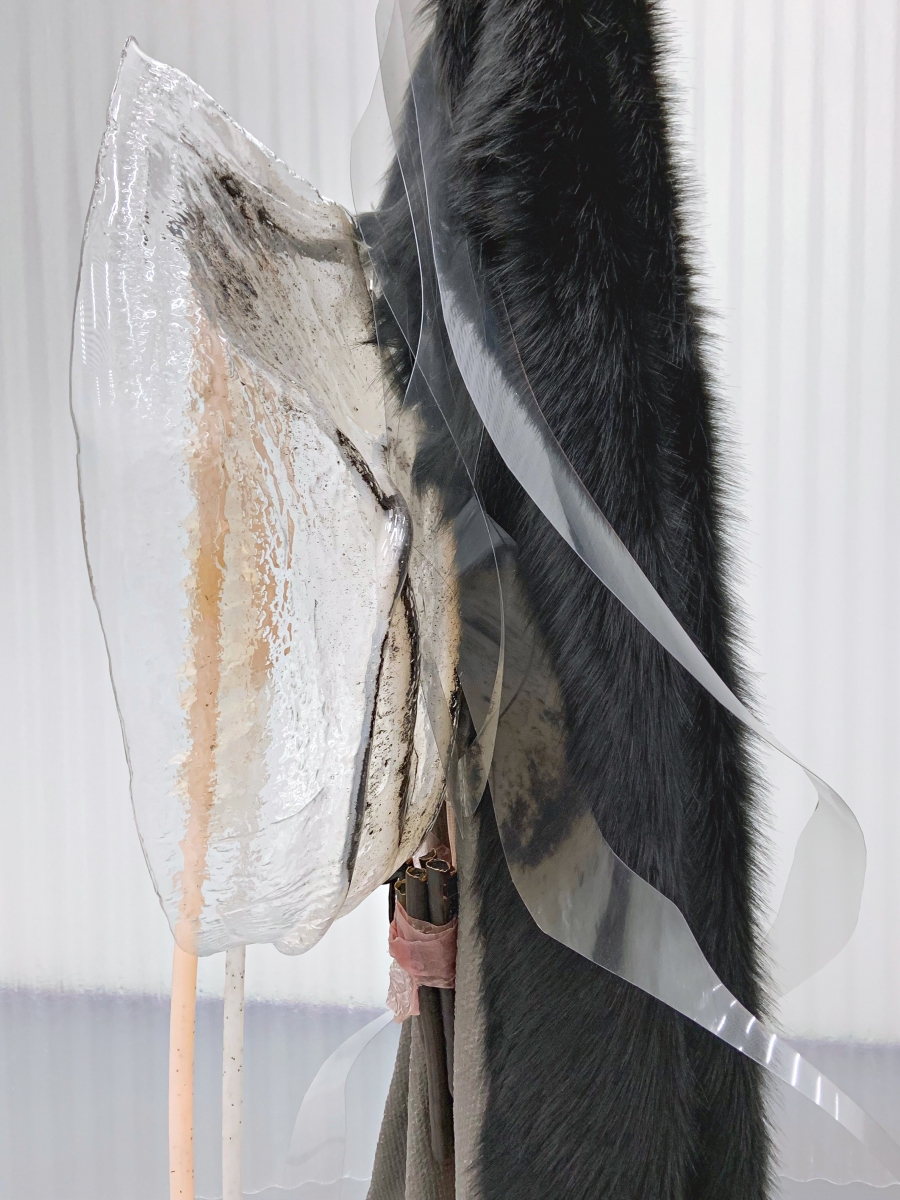
Pakui Hardware, Extrakorporal, 2018. Thermo-form vacuumed Plexiglas, silicone, soil, faux-fur, various textiles, silicone, chia seeds, sea-urchin spikes, PVC film, metal holders. Group exhibition Human-free Earth at Ujazdowski Castle Center for Contemporary Art, 2019 (detail)
The ideas and forms of your work have changed a lot since shows like ‘The Metaphysics of the Runner’ (CAC, Vilnius, 2014), which I remember as manifesting the healthy body cult, through the aesthetics of advertising, to more recent ones, becoming visually more abstract. How could you describe this evolution in your practice?
Even in ‘The Metaphysics of the Runner’, we were attracted by the tension between materiality and ideology and the economy. But over time, our fascination with material performativity grew steadily, until it took over completely (ha ha). We like to watch how a certain combination of materials and ready-made objects creates autonomous objects-subjects. Suddenly, in the process of combining materials, they take on a life of their own, they don’t belong only to you any more; and you have to adjust to their needs, not vice versa. These are the most rewarding moments in our practice.
How do you work with materials? Do you have a studio where you experiment? Do you know how to do most of the processes yourself, or do you have a team or a network of people that helps you?
We try to make most things we can by hand, with our own tools and skills, in our little studio in Berlin. However, there are times when we need to reach out for help beyond the perimeter of our space. Like making glass parts for our sculptures, for example: we don’t possess the skills or the necessary equipment for producing such difficult and delicate pieces. The same goes for thermo-forming larger and thicker Plexiglas elements. When it comes to creating and realising large-scale installations, and if the budget is large enough, we love to invite our dear friends and very talented architects Ona Lozuraitytė and Petras Išora to work with us. We have already collaborated together on solo shows such as ‘Vanilla Eyes’ at MUMOK, Vienna, ‘Creatures of Habit’ at SIC, Helsinki, among others, and we are currently solving a technically ambitious and complicated installation for the gorgeous space of the MdBK Museum of Fine Arts in Leipzig.
Do you think about the temporary aspect of your work when experimenting with materials, or is it important to test and work with long-lasting combinations?
Actually, there is a great chunk of non-thinking in the process of experimentation with materials. We like to gather a pile of diverse things, both ready-mades and ‘raw’ materials, in our studio, and then work with it by creating sort-of assemblages from them. Usually, the initial vision or idea of a possible object (or series of them) gets lost on the way, because new and unexpected decisions suddenly come to life, decisions that you could simply not have envisioned without actually working with different combinations of materials. Materials perform acts of their own when they meet, and sometimes these performances act in accordance with each other, and sometimes you need to separate them quickly before they ‘devour’ each other. Only after something autonomous is born within this process of experimentation, do we start to think how it is possible to fix it for a longer-lasting life.
I have just started to read the compilation by Darko Suvin from 1970 called Other Worlds, Other Seas, of science-fiction stories from the socialist countries to present to readers in the USA. He particularly emphasises the difference and the utopian aspect as a characteristic of science-fiction from the socialist world. In that regard, I wonder if you have a set of references or inspirations in your work that you would describe as coming from your region? How do you see this turning towards your own regional, local background in the very global and migratory art world: as something more to embrace or to erase?
Our very first works, even before Pakui Hardware developed, focused quite a bit on the failed futuristic utopias of socialist times, which are especially evident in modernist architecture. Later, we moved on to other themes, but we guess that the interest in failing utopias and a class-based society remained in us, and might be quite visible in our practice. By no means do we deliberately try to erase our local background. Over the years, it has actually become quite important for us to emphasise that we don’t fully belong (and never will) to the Western world; but at the same time, we simply speak of things that are currently important or fascinating to us, and they don’t necessarily directly refer to our regional context. But shows such as ‘Orient’, curated by Michal Novotny, can be a good case study of how we can speak about certain regional features, without falling into straightforward ways of exploring the themes of identity, utopias or inferiority complexes.
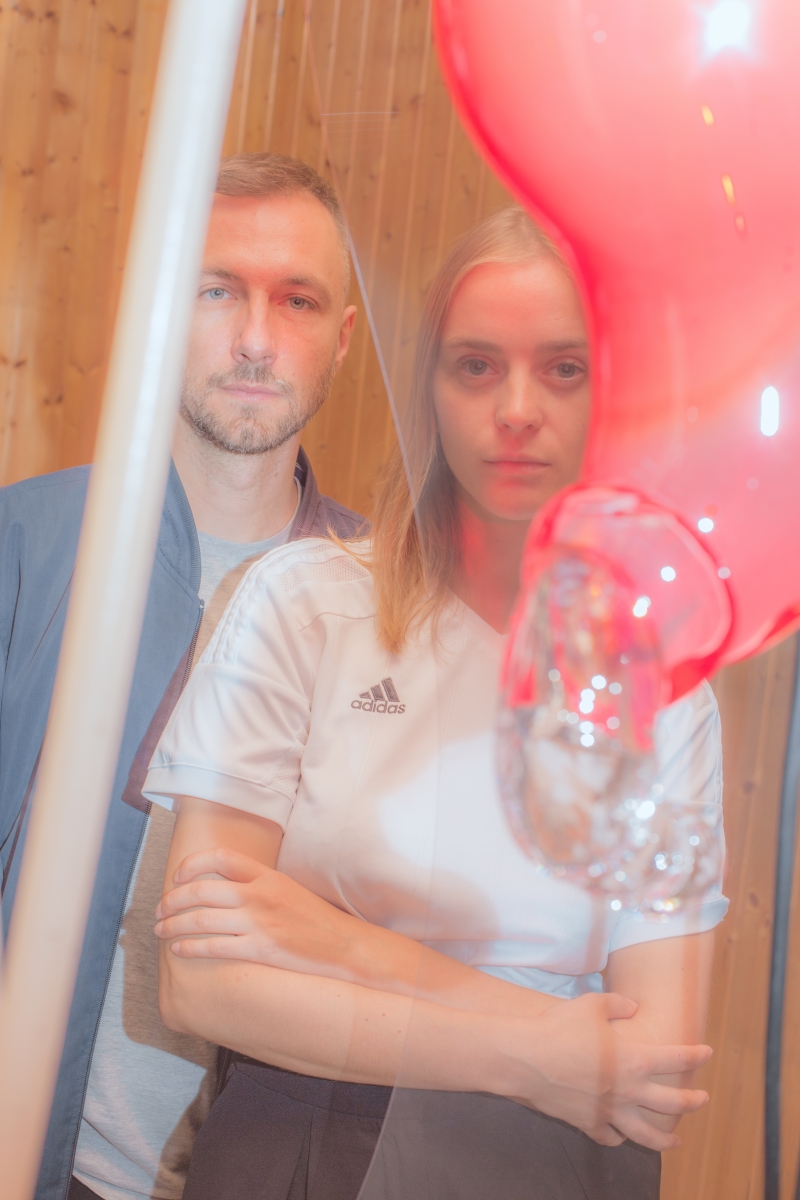
Pakui Hardware (Ugnius Gelguda and Neringa Černiauskaitė). Portrait by Laura Schaeffer, 2018

Pakui Hardware, On Demand, 2018. Heat-treated UV prints on PVC, tripods, silicone, chia seeds, snake-arms, clamps, thermoformed Plexiglas, edible pigment, water, Plexiglas profile, silicone rubber. Group exhibition Low Form at MAXXI museum, Rome, 2018 (detail)

Pakui Hardware, On Demand, group exhibition Low Form at MAXXI museum, Rome, 2018
Pakui Hardware, The Return of Sweetness, 2018. Glass, heat-treated Pentaprint film, textiles, latex, silicone, chia seeds, sea-urchin spikes, metal clamps. Solo exhibition at Tenderpixel gallery, London, 2018 (detail)
Pakui Hardware, The Return of Sweetness, solo exhibition at Tenderpixel gallery, London, 2018

Pakui Hardware, The Return of Sweetness in 13th Baltic Triennial Give Up the Ghost, CAC, Vilnius, 2018.
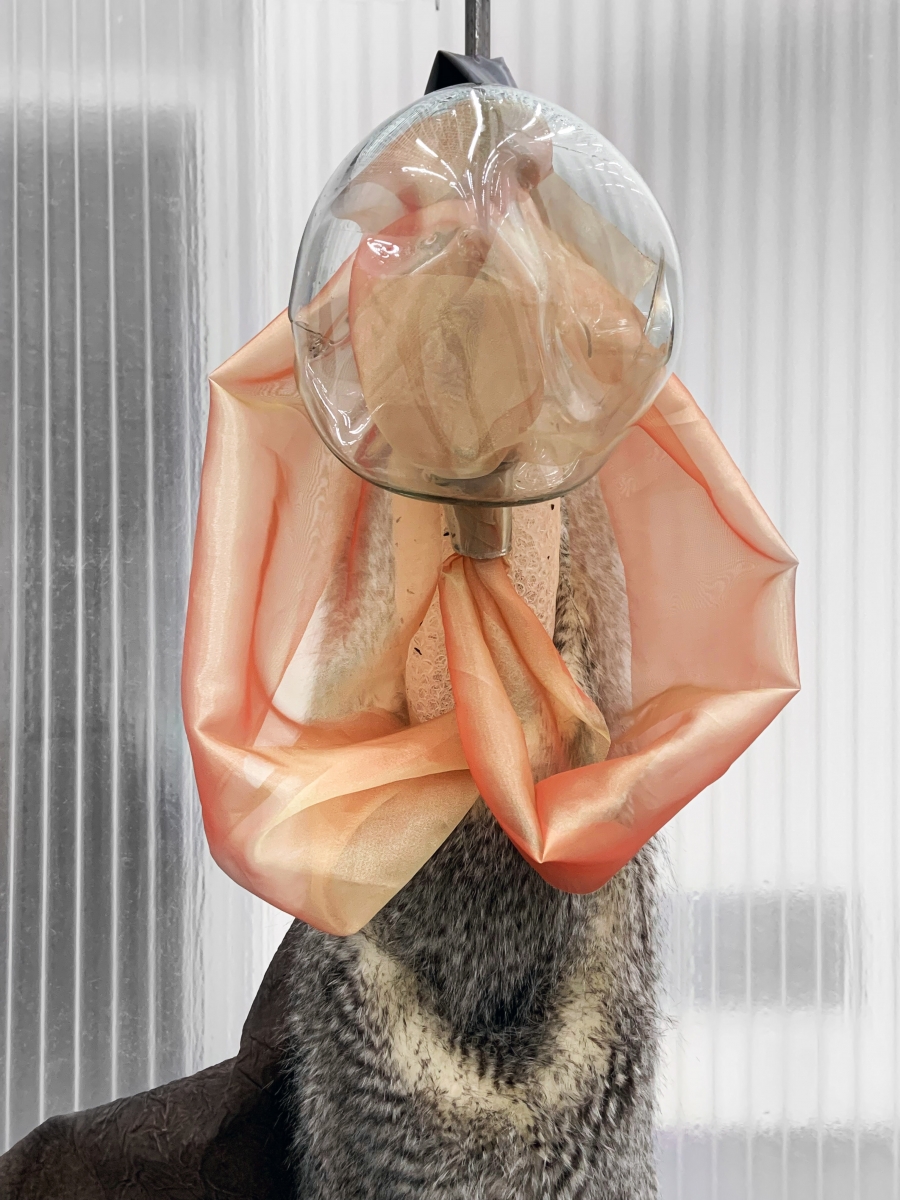
Pakui Hardware, Extrakorporal, 2019. Glass, faux-fur, leather, silicone, green tea, textiles, metal holders. Group exhibition Human-free Earth at Ujazdowski Castle Center for Contemporary Art, 2019 (detail)
Photos: Ugnius Gelguda and Andrej Vasilenko (photo no. 11).






























